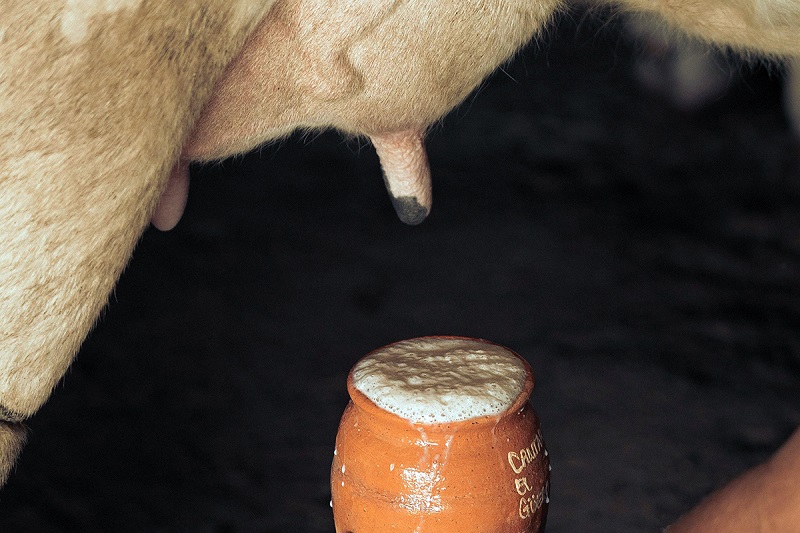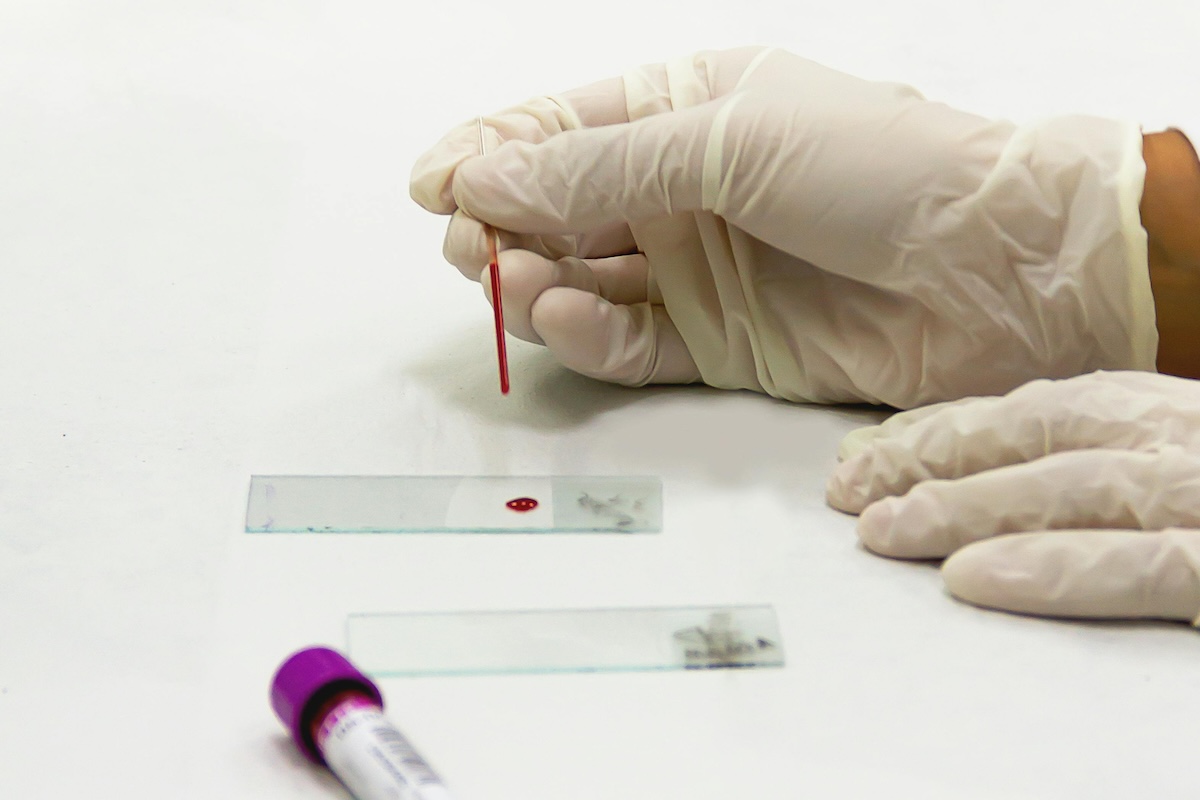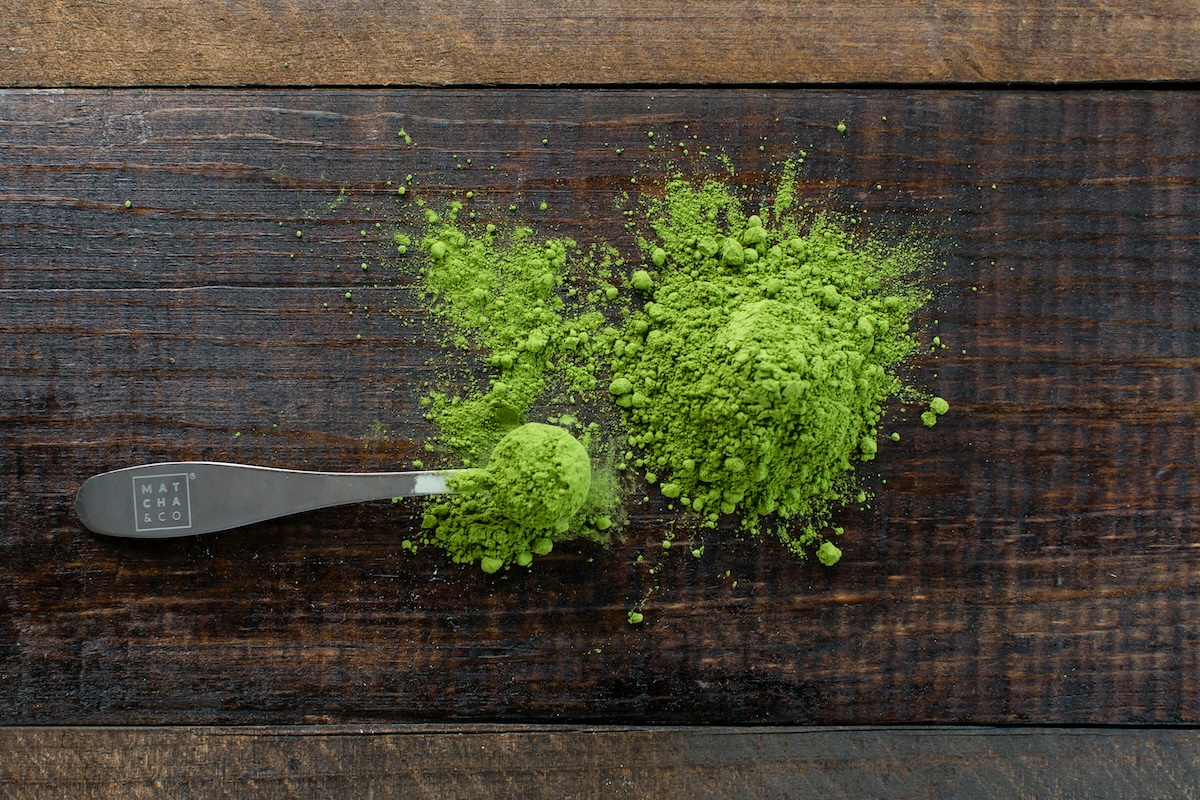Depending on who you hear from, raw milk is either the fountain of youth or certain death. By extension, pasteurization either destroys all the nutrients in milk or is a wonder of modern technology.
Discussions about raw milk are not new, but I think we’ve seen more of them over the past couple of years, with a combination of an increasing distrust of science on one hand and bird flu spreading in cows on the other. The strong rhetoric on both sides makes it difficult for consumers to actually figure out what is true. Basic logic tells us it cannot really be that raw milk kills you or makes you live forever, so the truth must lie somewhere in the middle.

Look, I’m a prisoner of the algorithm just like everyone else. I too have watched Ballerina Farm milk Tulip and then drink the frothy milk from a Mason jar, with just a touch of lavender. And honestly, it looks delicious. But is it deadly?
As usual, the truth lives in the data. So let’s get started.
What is raw milk (and what is pasteurization)?
Raw milk is milk that has not undergone pasteurization. Pasteurization, in turn, is a method named for Louis Pasteur, who developed the first modern(ish) version of it. (He was focused on wine and beer; milk came later.) During pasteurization, milk is mildly heated to kill pathogens. This makes it possible to store milk for longer without it spoiling.
Prior to pasteurization, milk was a common source of foodborne disease, especially when shipped and stored. There are a variety of ways that pathogens can be introduced to milk, but the two most common are (1) through manure, which can harbor E. coli, and (2) through mastitis, which is sadly common in dairy cows. If these pathogens are in milk, and especially if they are given time to grow through storage and shipping, they can make people sick. Raw milk has also historically been linked to many illnesses, including tuberculosis.
Through the process of heat, pasteurization destroys many pathogenic bacteria, as well as reducing bacteria that make milk spoil. The result is milk with less ability to make people sick and with a greater ability to be stored for longer periods. At the same time, pasteurization also may affect bacteria and enzymes that are not pathogenic, which may even be beneficial. This is one of the concerns raised by the proponents of raw milk.
The risks of raw milk: What does the data say?
It is pretty clear that raw milk is a risk factor for foodborne illness, more so than pasteurized milk. There are a few ways to see this. The first is just mechanical, based on science. We know that many of the pathogens in raw milk can cause disease, and we also know that pasteurization kills them. We also have, historically, huge amounts of data showing that raw milk contributes to disease outbreaks.
In the modern era, in the U.S., the CDC collects data on the source of outbreaks of foodborne illness. Among outbreaks associated with milk, the majority are associated with unpasteurized milk, more notable because it is much less commonly consumed. In addition, there is data across states that shows that outbreaks linked to milk are more common in states where unpasteurized milk is available.
There is little question of the direction of these effects: raw milk is higher-risk. On the other hand, it is probably worth noting that these numbers are small. In 2017, for example, foodborne illness associated with dairy sickened 85 people. Of course, there are surely illnesses that are not reported, but this figure is only about 5% of overall food-related outbreaks.
A 2017 study estimated that about 760 illnesses per year are caused by consumption of unpasteurized dairy. This same study suggested that about 3.2% of Americans consumed raw milk. That’s a small share, but it’s still about 11 million people, making the illness share small.
As with any foodborne illness, we worry most here about illness for people with immune-system compromise. Pregnant women, older adults, children under 5, and anyone who is otherwise ill are at higher risk.
Proponents of raw milk have pointed out that there are safer and less safe ways to handle raw milk, and individual producers may do a better or worse job. It is likely that it’s safer if you find a good provider. That may be challenging for individual consumers.
How to put this all together? It seems clear that there is some risk to raw milk but also that it is relatively small, and thoughtful approaches may make it smaller. In this sense, it is like many of the kinds of risks we take in life. The question is, are there any benefits that would make it worth it?
The benefits of raw milk: What does the data say?
One thing you’ll often hear is the concern that pasteurization kills some of the beneficial probiotics and enzymes in milk, rendering it less healthy. It is, of course, true that organisms are killed by pasteurization — that’s kind of the point. What isn’t clear is whether that matters. It is not obvious that there is anything important destroyed by pasteurization. And indeed, many cultures globally do not drink milk at all, so it cannot be that these enzymes are necessary.
These arguments therefore feel specious. To look for benefits healthwise, we actually want to look at data on links between raw milk consumption and health. The most commonly cited links are between raw milk consumption and better respiratory health and fewer allergies in children. Here’s one example, a paper that links raw milk consumption and health in childhood. The paper claims that raw milk consumption is as good as breastfeeding in terms of its effects.
Notably, though, the reason we are seeing the impacts of raw milk in these studies is the same reason we see a lot of benefits of breastfeeding: biased correlations! The kids who drink raw milk are different from those who do not, and it’s impossible to know what of the many differences are responsible for the health impacts.
In this particular case, one major difference is that most kids who drink raw milk live on farms. There is an interesting possibility that the farm living might itself contribute to lower allergy and asthma risk. But there is really no reason to think it’s the milk.
Other purported benefits, such as making people more lactose-tolerant, do not show up in the best data. In summary: there are no reliably documented health benefits to raw milk.
This is not to say that some individuals might not find that raw milk has benefits. Some people prefer the taste. It’s also a way to support local farming (since raw milk is often sold directly from farms to consumers). People may feel the value of the connection to their food. These are real benefits, although they are more about tastes and values than about health.
Can I even buy it?
A valid question: is this debate even of interest? Could you get raw milk if you tried? Most places, yes, but sometimes you have to try hard.
Federal law prohibits the sale of raw milk across state lines, but individual states have their own rules about where raw milk can be sold. This map (which is from a raw milk advocacy organization, just FYI) reports the rules on milk sale by state. In most of the U.S. you can either buy raw milk at retail establishments or from farms directly. Some states have more stringent rules.
The bottom line
- There are no objective benefits to raw milk from a health standpoint.
- Raw milk carries a higher risk of disease than pasteurized milk. But the risks are relatively small, especially if you are a person with a healthy immune system.





















Log in
A point worth mentioning is that raw milk can be used to make kefir where the kefir grains ferment the raw milk and you get extra probiotics from the process.
Another factor to consider is how the process of homogenization of supermarket milk introduces broken and altered particles that our digestive system has not seen and can cause issues.
You missed the opportunity here to mention the current concern about bird-flu in dairy cows, and the possibility that someone consuming raw milk could be exposing themselves to bird-flu.
What about cheese? It’s pretty common to see unpasteurized cheese in NYC and before this avian flu outbreak I would often buy it, without seeking it out.
As a cheesemonger, I can tell you this is a big hot topic in the cheese community! I ate raw milk cheeses all throughout my pregnancies without any issues, but I felt comfortable doing so because I knew where the milk was coming from. I tell this to a lot of pregnant women who come up to my counter concerned about raw milk cheeses. I assure them that the risk is low, and that it’s more common to have outbreaks of listeriosis with sprouts, produce like spinach, and, sadly, deli meats. BUT I also follow it by saying ‘However, if you eat this raw milk cheese and can’t sleep tonight, it’s not worth it!’
Thanks for this article! We have relatives who are obsessed with giving their 1.5 year old only raw milk and act like they are raising God reincarnated because of it. I won’t be sharing this article with them because I don’t want to spike my blood pressure this morning but it made me smile.
Thanks for this, Emily. It is helpful for readers to know that E. coli 0157:H7, a bacterial strain that is contaminating our cattle and is linked to raw milk consumption, can cause hemolytic uremic syndrome in children under 5. This very serious infection involves hemorrhagic bloody diarrhea and can lead to kidney failure. People should not only make sure that their milk is pasteurized, but should also make sure that apple juice is pasteurized and people should make sure to wash fruits and vegetables and cook meat thoroughly, especially ground beef as the grinding process spreads contamination throughout the product. Fruits and vegetables are affected because irrigation sources can be contaminated by e coli 0157:H7 from agricultural runoff, but simply rinsing the produce under running water washes it off.